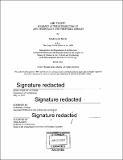| dc.contributor.advisor | Gediminas Urbonas. | en_US |
| dc.contributor.author | Martin, Ronald Javier | en_US |
| dc.contributor.other | Massachusetts Institute of Technology. Department of Architecture. | en_US |
| dc.date.accessioned | 2017-09-15T15:36:28Z | |
| dc.date.available | 2017-09-15T15:36:28Z | |
| dc.date.copyright | 2017 | en_US |
| dc.date.issued | 2017 | en_US |
| dc.identifier.uri | http://hdl.handle.net/1721.1/111490 | |
| dc.description | Thesis: S.M. in Art, Culture and Technology, Massachusetts Institute of Technology, Department of Architecture, 2017. | en_US |
| dc.description | Cataloged from PDF version of thesis. | en_US |
| dc.description | Includes bibliographical references (pages 74-75). | en_US |
| dc.description.abstract | The author's methodological framework is used to position his art practice in relation to an ecology of thinkers, artists, and activists engaged with defending democratically governed un-privatized public space. Historically, there is a legacy of artists working with techniques of dispersion, sequestering, and the visualization of otherwise imperceptible components of air to create meaning. Starting in the mid- 1960s, a number of artists and engineers worked together to create pneumatic projects such as airborne inflatables released in the urban environment and mist machines capable of enveloping an entire building in a cloud of fog. However, as this thesis argues, the early 1970s marks the moment when a radical rupture happened in the artistic use of air as a medium. Air became a space to fill with toxicity as a sign of public protest. It was also the time of a motivational shift in how artists began working with air. This era also marked the beginning of a political activation of air space as an environmentalist tactic of critique. Forty years later, thanks to nano technology and capitalist regimes, society's relationship to air space is changing drastically. Innovation in air quality sensors is allowing for the most precise readings of one's immediate air space ever. This comes from breakthroughs in carbon nanotube air composition sensing, a technology finding a wide range of applications in various military and health related industries simultaneously. What is at stake socially in the widespread proliferation of such technology? The author will unfold his interest in this emerging site of inquiry by recounting the principle objectives in his art practice and his use of air as a medium. | en_US |
| dc.description.statementofresponsibility | by Ronald Javier Martin. | en_US |
| dc.format.extent | 75 pages | en_US |
| dc.language.iso | eng | en_US |
| dc.publisher | Massachusetts Institute of Technology | en_US |
| dc.rights | MIT theses are protected by copyright. They may be viewed, downloaded, or printed from this source but further reproduction or distribution in any format is prohibited without written permission. | en_US |
| dc.rights.uri | http://dspace.mit.edu/handle/1721.1/7582 | en_US |
| dc.subject | Architecture. | en_US |
| dc.title | Air tight : polemics at the intersection of art, technology and the public domain | en_US |
| dc.title.alternative | Polemics at the intersection of art, technology and the public domain | en_US |
| dc.type | Thesis | en_US |
| dc.description.degree | S.M. in Art, Culture and Technology | en_US |
| dc.contributor.department | Massachusetts Institute of Technology. Department of Architecture | |
| dc.identifier.oclc | 1003322557 | en_US |
